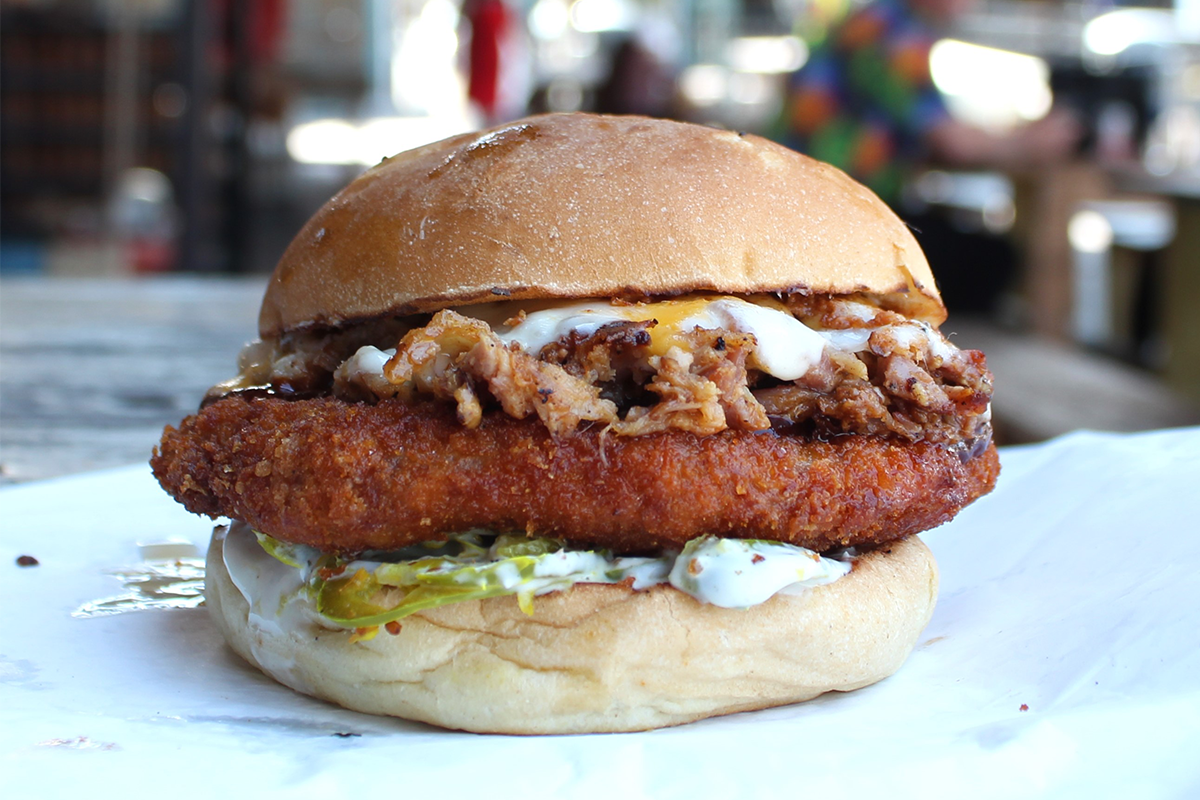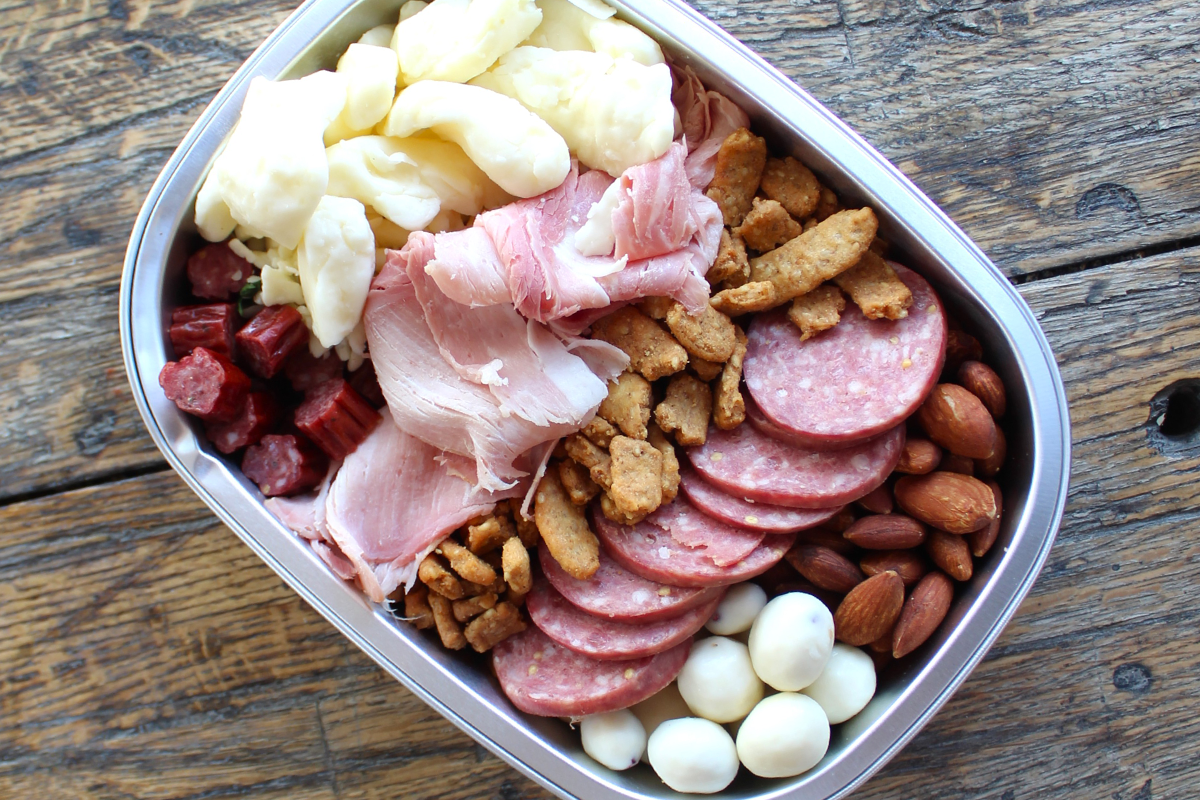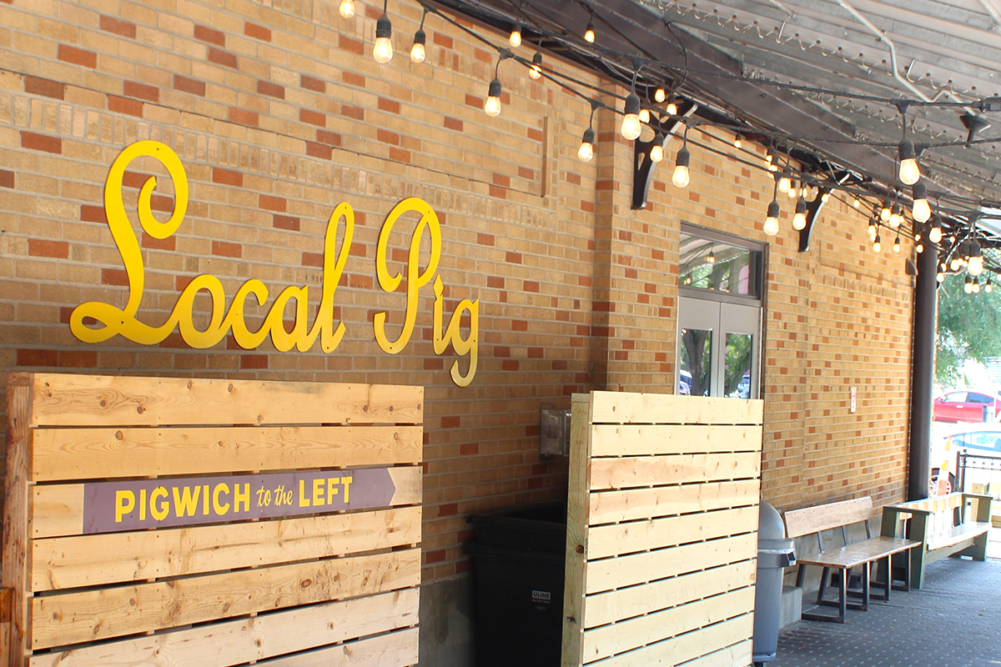Local Pig, Kansas City, Mo., started as a somewhat “romantic” venture — an artisanal butcher and sausage shop tucked away in the city’s East Bottoms neighborhood near the confluence of the Missouri and Kansas Rivers. Alex Pope, a former restaurant chef-turned entrepreneur opened the shop 11 years ago with business partner and co-owner Matt Kafka. Back then, Pope and his “dudes” made sausage by using an old-fashioned hand-cranked meat grinder along with a manual sausage stuffer. Visitors to the shop could walk through the door and watch Local Pig employees break down a side of beef or whole pig.
Kansas City wasn’t exactly a Mecca for artisanal butcher shops. Residents of the barbecue haven didn’t have readily available options for buying locally sourced meats. But in 2023, Kansas City and the greater metro area, including suburbs across the state line in Kansas, boasts at least 20 brick-and-mortar meat shops. And there are almost too many to count e-commerce sites selling everything from grass-fed, grass-finished beef to meats sourced from heritage breeds fed organic diets. With a few mouse clicks consumers can purchase meat bearing any label claims they might desire and have it delivered to their doorstep.
The times changed, and Local Pig had to change too.
Ground beef and beer
A native of Eau Clair, Wis., Pope opened Local Pig as a 29-year-old classically trained chef who had worked at both the American Restaurant and R Bar in Kansas City. With his culinary experience combined with the background of most of his employees at the time and the shop’s location, the Local Pig’s novelty was like lightning in a bottle.
“We had kind of a weird location; it brought a lot of people in,” Pope said of the early days of Local Pig. “And then, we were doing our primal cutting right out in the lobby of the building, basically, right behind the counter. So, if you came in, you would see a whole hog on the table or a beef quarter, and the guys would be working on it. I think there’s a lot of interest in watching the process and the way we did it. So, that was unique. I think there was some combination of people wanting to find a weird place to go, watching people cut the meat and getting broken down.
“There’s a huge range of ways you can get local meats now that were not readily available back then, so there were several different parts, I think, that led to our initial success.”
Six months into opening Local Pig, Pope knew that to continue the shop’s success he would need to integrate a foodservice operation into the butchery and make use of the butcher shop products. Pigwich opened a year later as a food truck offering simple but meaty sandwiches, burgers and sides.
“I had never worked in the meat industry before opening Local Pig,” Pope said. “I had been a restaurant chef. But I figured out what everybody figures out pretty quickly, and that’s there is a lot of ground beef attached to those steaks and we needed to do something with that ground beef. The reason we did it as a food truck was there wasn’t going to be a cost-effective way for us to retrofit the building we were in at the time to have a commercial kitchen. It seemed like the lowest-cost entry solution was going to be a mobile kitchen that we would just park outside.”
 Pigwich is known for decadent sandwiches like the Big Pig —
a chicken patty topped with pulled pork, pepperjack cheese, jalapeno pickle slices, ranch and 'Nduja. (Source: Local Pig)
Pigwich is known for decadent sandwiches like the Big Pig —
a chicken patty topped with pulled pork, pepperjack cheese, jalapeno pickle slices, ranch and 'Nduja. (Source: Local Pig)Rolling into Westport
Two years passed before Pope, Kafka and crew opened a brick-and-mortar location of Local Pig in Westport, a retail, restaurant and bar district in Kansas City with a history dating to the mid-1800s. Local Pig in Westport was another avenue to sell more Local Pig products and sandwiches. Pope said the menu was well received, but it wasn’t the best fit for that neighborhood. The crowd wanted Pigwich fare, but the building couldn’t handle the kind of equipment necessary to execute a Pigwich menu.
“There’s a couple of different kinds of hoods and hood systems, and we were taking over an existing space,” Pope said. “They did not have the kind of hood system that would allow you to deep fry and do hamburgers and french fries. So, we went a more upscale route for small plates, charcuterie boards and things that worked.
“I was happy with the food we put out. But there were also some underlying issues with splitting a space with another business and the relationship there was not productive in the end,” he said. “It was a good experience; it was very humbling for me to put together a project and not have it work. We didn’t lose a bunch of money, we just kind of broke even for a while. It’s too crazy of a business to be in just to break even; it doesn’t make sense.”
Pope also dabbled in restaurant consulting for The Cordish Cos., which operates the area’s Power & Light District, an entertainment hub in downtown Kansas City that is the scene of World Cup and Super Bowl watch parties, live music and other large events. In 2015, Cordish opened Cleaver & Cork, known as a butcher-driven gastropub. The concept eventually closed in 2018.
“It was another one of those things where the menu and the vibe didn’t quite fit the neighborhood,” Pope said. “What went into that space was Guy’s Taco Dive; honestly, that’s a better concept for that space. We were trying to do pretty high-end stuff. Again, I was happy with the food that was going out, but it just wasn’t busy enough to make it work in that space.”
During this time of exploring different avenues to grow the business, the Local Pig shop in East Bottoms pressed on as it had since its opening. However, the business partners knew something had to give. Roughly 18 months before the end of the lease at the East Bottoms building, the landlord wanted the partners to commit to a much longer lease term. Pope wanted to buy the building.
The building wasn’t for sale, but the owner was open to retrofitting it to include Pigwich which was a key requirement for Pope. “That was my big thing: we needed to have Pigwich inside,” he said, “and we needed to sell beer.”
The cost of the construction outstripped the property value, and getting a loan to finance the work was out of the question.
“We were at an impasse about what we were going to do, so I just started looking around,” Pope said. “I wanted to stay generally in the neighborhood. The spot we’re (currently) in came up as did one other spot in the Crossroads. We looked hard at both of them, but I’m very glad we got the space in City Market. We didn’t have to do much at all to tweak our menu to be the kind of place that fits in really well at City Market. We’re very family focused, we have a general menu that works for many different kinds of people; the price point is relatively low, and we’re good at putting out food quickly. All of those things really made sense for me and City Market.”
The landlord even gave Local Pig money to upgrade the space. “It was a very fortunate place for us to land,” Pope added.
“We don’t do butchering anymore, and there isn’t a funky food truck,” he said. “It certainly came from the same place, but it’s different and I’m very happy that it’s different. The way we ran things in East Bottoms was not long-term sustainable. We did not make enough money to make it work in the long run, and the building was built in the 1880s and it was not meant to house a busy bustling, multi-concept business. We were bursting at the seams there.
“It was the right move,” he said. “It broke a lot of people’s hearts. It was very romantic, but in the long run it wasn’t sustainable for us to continue.”
COVID and co-packers
On March 21, 2020, Kansas City Mayor Quinton Lucas issued a “Stay at Home” order, requiring Kansas Citians to stay at home except for “essential activities” to slow the spread of COVID-19. The order went into force at 12:01 a.m., March 22.
“We were doing everything the same way up until coronavirus, and then everybody quit,” Pope said. “We were still selling meat, but I no longer had any employees that were willing to come in to cut the meat. So, for a few weeks I was doing it; it was kind of crazy.”
Pope was staying home with his three young children while his wife was doing her work-at-home job. He was going into the shop before or after that to cut meat. This routine quickly became unsustainable. The solution was in Trimble, Mo., just north of Smithville, Mo., which is a half-hour away north of KC.
“We started talking to Paradise Locker in Smithville,” Pope said. “They were already killing the hogs, so I just said, ‘Guys can you cut these up for us?’ and they said ‘yeah, we can cut these up for you.’ So, that was step one.”
Pope and Kafka found a similar solution for their beef at a different slaughterhouse. It was a tough decision, but the business partners slowly realized that the way they were doing things had been romantic and interesting, but it also was inefficient, and not necessarily as high quality as what a federally inspected plant could produce.
“A USDA plant is an impeccable work of cleanliness, sanitation and amazing machines,” Pope explained. “The health department doesn’t want us to use Cryovac. Once we started doing that, my eyes opened up. We inject our ham here to make ham, but when I talk to the guys at Paradise and they tell me about their injector machine compared to my hand pump, I know it’s a better product. It gets a better cure.”
So, the partners started turning the Local Pig recipes over to Paradise Locker and Nadler’s Meats, Wellington, Mo., about 45 minutes away from KC. They also worked with a spice co-packer and then with a meat co-packer to make the sausage, bacon and a majority of Local Pig’s deli meats.
“They make our recipes the same way we would make our recipes, except they would use those awesome machines, and Rollstock and Cryovac,” Pope said. “They use the industry standard machines that we don’t have access to — we don’t have enough power; we don’t have enough space; we don’t have the licenses. It really dovetailed with the way that we didn’t have employees.”
Now, the staff at Local Pig focuses more on value-added products. Instead of making sausages, they’re making ready-to-eat entrees and sides. They’re using the chorizo made by a co-packer to make queso and burritos, for example.
“The margin that we get for those products compared to the labor that we spent is just a much better deal for us, in my opinion, to be taking a co-packed product and turning it into a value-added product. That’s where our market is finding our niche.”
The products also are “super consistent,” Pope said. “The consistency and the quality are better than we could do — it was one or two guys; they take vacations. A spice blender does a better job than one of my dudes.”
Another benefit of working with co-packers is the ability to hold the line on sourcing of products. Pope said the business dips into southern Iowa to get some items, but the rest are made in Missouri.
 Local Pig rolled out a new charcuterie board menu as one way to adapt in an age of people eating less meat. (Source: Local Pig)
Local Pig rolled out a new charcuterie board menu as one way to adapt in an age of people eating less meat. (Source: Local Pig)Meat boutique
A lot has changed since Local Pig opened 11 years ago. The pandemic not only changed how Local Pig items are produced, but it also opened the door to more options for consumers to source animal proteins during a period of scarcity driven by panic buying. And a single farmer doesn’t have to go through Local Pig or a farmers’ market to sell their products. Local Pig is like a middleman now, so finding a place in the value chain has been a process.
“To be blunt, if we didn’t have Pigwich, we would have closed eight years ago, maybe five years ago,” Pope said. “Pigwich now makes a large majority of our revenues; it is now the thing that drives the business. A stand-alone meat market is hard to make work without a restaurant, or without a grocery store section attached to it. We learned that too — you almost have to have foodservice unless you’re farmstand-style and you’re raising the meat. Even then, it’s tough to do without foodservice.”
Pope did consider integrating the business by acquiring a small plant, harvesting animals and making products, especially as USDA began investing billions of federal dollars in small- to medium-sized processing plants to fill gaps in the country’s meat supply chain. Pope said an offer was on the table, but ultimately, he and business partner Kafka decided against taking that route.
“The unknown ‘unknowns’ are huge for me, and to put that much capital at risk, and then on top of it, have Local Pig, the primary business be dependent on a business I don’t know how to run was the deciding factor,” he said. Additionally, he didn’t want to jump on a learning curve at age 40 with three children under the age of 10.
“I like seeing them, and I just didn’t want to bite that off because I know what would happen — I know I’d be there all the time and that’s just not what I want out of my life right now,” he said.
These days, the team at Local Pig is enjoying a great work-life balance, making the money they want to make, trying to rework systems to make sure that they’re as efficient as they can be, and rework Local Pig’s and Pigwich’s offerings.
“We just rolled out a new appetizer menu, a whole new line of sides and frozen entrees,” Pope said. “We rolled out an all-new charcuterie board menu. So, we’re trying to re-adapt what Local Pig is in the age of people eating less meat. I have no empirical data for this, but my instinct is people are buying a little bit less meat. Not a lot, but when you’re in a business that has a high cost of goods, a 10% reduction in revenues, we feel that. So, we’re trying to retool what we’re offering to make sure we’re offering the highest margin products and make sure we’re offering what people want.”
Local Pig is a very different place than it was, Pope said, but it may need to look more like “a meat boutique” rather than a butcher shop with an eye toward sustaining the business for the long term.
“So, maybe that includes a wider range of meats that aren’t local meats like wild boar, venison, elk, that kind of thing,” he said. “We haven’t gone down that road, but we’re discussing what a prepared meat market, a meat boutique, would look like as opposed to a traditional butcher shop that has steaks and bacon. We’re never going to stop having steaks and bacon, but if we can have other things, that may increase our market share.”



